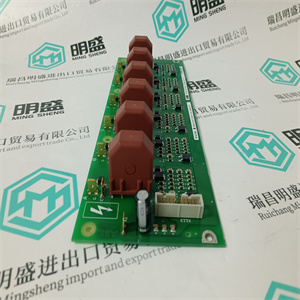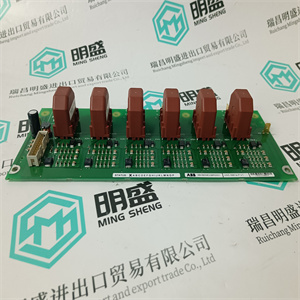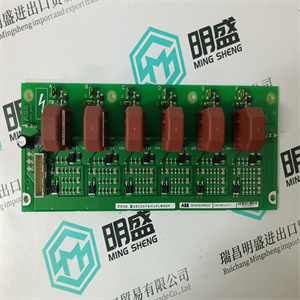产品展示
联系我们
联系人:麦女士
手机:+86 15270269218
电话:
Q Q:3136378118
邮箱:stodcdcs@gmail.com
地址:江西省九江市瑞昌市东益路23号赛湖农商城401号
AOT150
待验证的特性条款或子条款验证选项可用通过试验验证通过计算验证通过满足设计规则1材料和组件零件的强度:10.2耐腐蚀性10.2.2是否绝缘材料的特性:10.2.3热稳定性10.2.3.1是否绝缘材料的耐腐蚀性正常加热10.2.3.2是否绝缘材料对内部电效应引起的异常加热和火灾的耐受性10.2.3是否耐紫外线辐射提升10.2.4是否无机械影响10.2.4是否无标记10.2.6是否无10.2.7是否无2外壳防护等级10.3是否有3间隙和爬电距离10.4是否有4电击防护和保护电路的完整性:10.5组件外露导电部件和保护电路之间的有效连续性10.5.2是否组件对外部故障的有效性10.5.3是是是5开关设备和部件的安装10.6否否是6内部电路和连接10.7否否是7外部导体端子10.8 NO NO NO YES 8介电性能:10.9工频耐受电压10.9.2 NO NO NO冲击耐受电压10.9.3 NO NO NO YES 9温升极限10.10 YES YES YES 10短路耐受强度10.11 YES YES 11电磁兼容性(EMC)10.12 NO YES 12机械操作10.13 NO NO 218保护和控制设备| ABB 5配电盘5.1电气配电盘,如某些特性,如耐腐蚀性或机械冲击性,仅接受通过测试进行验证;相反,对于温升和短路等其他特性,三种验证模式均被接受:测试、计算或设计规则。新标准的另一个重要变化是更好地说明了制造商的数字。特别是为制造商定义了两种“存在方式”:原始制造商和组装制造商。一个是初步进行了属于待完成组件的系列的原始设计的主体,并为此进行了设计验证(以前的型式试验)、推导计算或设计规则,以涵盖组件验证的所有可用可能性。很明显,原始制造商能够“标准化”并提出的高和有效的布局,使其组装并因此获得良好利润的可能性越大。二个被确定为“装配”制造商,是真正制造装配的主体,即获得不同的零件和组件并按要求安装,从而利用“原始”制造商提供的已提及的设计机会之一,完成装配、安装和接线。本标准仍然承认,装配的某些阶段也在制造商的实验室或车间(现场或机器板上)进行,但必须遵守标准说明。从运营角度来看,制造商和面板制造商(即终端制造商)可以像往常一样使用成套销售的产品,并将其包含在“原始”制造商的目录中,以便按照他们需要的安排进行组装。总而言之,“原始”制造商应:-设计(计算、设计和实施)所需的装配线;-测试属于该装配线的一些原型;-通过这些测试,以证明符合本标准的强制性规定通过计算或其他评估或测量,从测试中得出其他配置;-添加未经测试但符合适当“设计规则”的其他配置收集所有上述信息,并通过目录、幻灯片或软件向终客户提供这些信息,以便终客户能够通过执行适当的控制和维护来构建新组件、使用它并尽可能好地管理它。



AOT150
Characteristics to be verified Clauses or subclauses Verification options available Verification by testing Verification by calculation Verification by satisfying design rules 1 Strength of materials and parts of the assembly: 10.2 Resistance to corrosion 10.2.2 YES NO NO Properties of insulating materials: 10.2.3 Thermal stability 10.2.3.1 YES NO NO Resistance of insulating material to normal heat 10.2.3.2 YES NO NO Resistance of insulating materials to abnormal heat and fire due to internal electric effects 10.2.3.3 YES NO NO Resistance to ultraviolet (UV) radiation Lifting 10.2.4 YES NO NO Mechanical impact 10.2.4 YES NO NO Marking 10.2.6 YES NO NO 10.2.7 YES NO NO 2 Degree of protection of the enclosures 10.3 YES NO YES 3 Clearances and creepage distances 10.4 YES YES YES 4 Protection against electric shock and integrity of protective circuits: 10.5 Effective continuity between the exposed conductive parts of the assembly and the protective circuit 10.5.2 YES NO NO Effectiveness of the assembly for external faults 10.5.3 YES YES YES 5 Installation of switching devices and components 10.6 NO NO YES 6 Internal electrical circuits and connections 10.7 NO NO YES 7 Terminals for external conductors 10.8 NO NO YES 8 Dielectric properties: 10.9 Power-frequency withstand voltage 10.9.2 YES NO NO Impulse withstand voltage 10.9.3 YES NO YES 9 Temperature-rise limits 10.10 YES YES YES 10 Short-circuit withstand strength 10.11 YES YES YES 11 Electromagnetic compatibility (EMC) 10.12 YES NO YES 12 Mechanical operation 10.13 YES NO NO 218 Protection and control devices | ABB 5 Switchboards 5.1 Electrical switchboards As it can be noticed, for some characteristics, such as the resistance to corrosion or to mechanical impact only the verification by testing is accepted; instead, for other characteristics such as temperature-rise and short-circuit, the three verification modalities are all accepted: testing, calculation or design rules. Another important change in the new Standard is the better specification of the manufacturer figure. In particular two “ways of being” are defined for the manufacturer: the “original” manufacturer and the “assembly” manufacturer. The first one is the subject who has carried out initially the original design of the series to which belongs the assembly to be completed and to this purpose has carried out the design verifications (formerly type tests), the derivation calculations or the design rules, to cover all the available possibilities for the assembly verification. It is evident that the highest and most performing the layouts that the original manufacturer is able to “standardize” and to propose, the greater the possibilities for him to have his assemblies constructed and consequently to make a good profit. The second one, identified as “assembly” manufacturer, is the subject who really builds the assembly, that is who gets the different parts and components and mounts them as required, thus carrying out the completed assembly, mounted and wired, exploiting one of the design opportunity already mentioned, ready to use, offered by the “original” manufacturer. The Standard still accepts that some phases of the fitting of assemblies are carried out also out of the manufacturer’s laboratory or workshop (on site or on machine board), but the Std. instructions must be complied with. From an operational point of view, the manufacturers and the panel builders, i.e. the end manufacturers, could use as usual the products sold in kits and included in the catalogues of the “original” manufacturers, for assembling according to the arrangement they need. To summarize, the “original” manufacturer shall: - design (calculate, design and carry out) the desired assembly line; - test some prototypes belonging to that assembly line; - pass these tests to demonstrate the compliance with the mandatory prescriptions of the Standard; - derive from the tests other configurations by calculation or other evaluations or measurements; - add other configurations obtained without testing but thanks to suitable “design rules”; - collect all the above mentioned information and make them available for the end customer by means of catalogues, slide rules or software, so that he can build the new assembly and use it and manage it as best as possible, by carrying out the suitable controls and maintenance.
相关产品
















